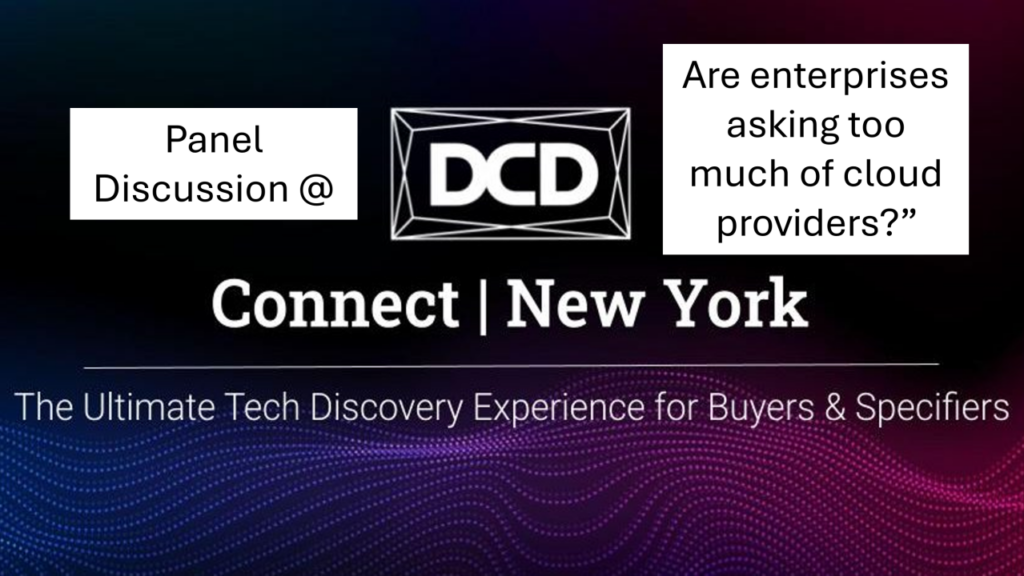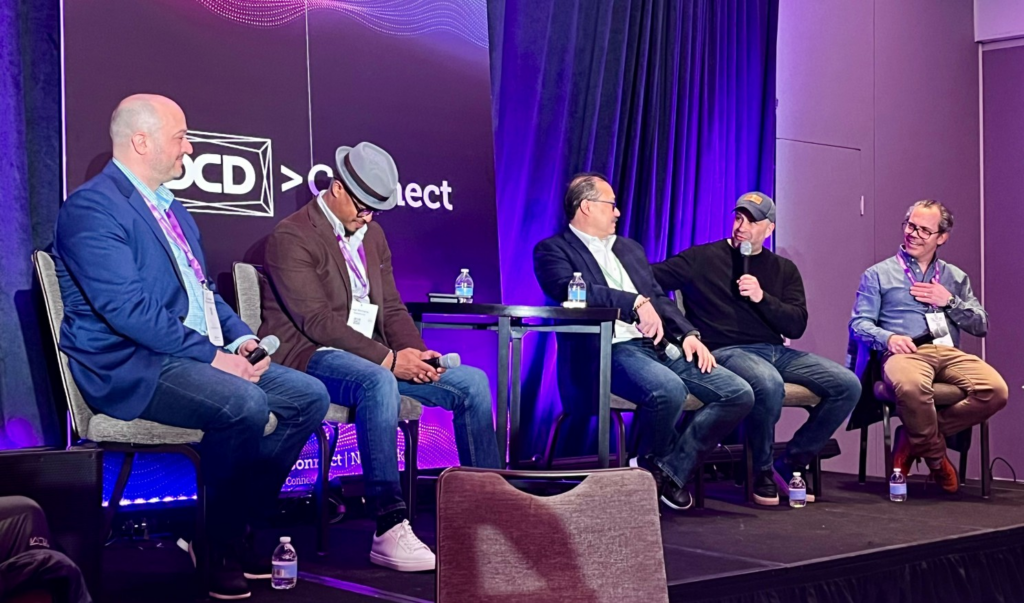
OCOLO’s East Coast team (all 3 of us!) turned out in force to hear our intrepid CEO, Tony Rossabi, speak on a Day One panel at the DCD>Academy Connect NYC Conference called: “Clouded judgment – Are enterprises asking too much of cloud providers?” This is one of many challenges the OCOLO team has grappled with as we strive to transform colocation transactions by leveraging technology and introducing more transparency and cooperation to the process between IT Enterprise Officers and Service Providers with our digital platform, ocolo.io. As we’ve worked to set up this new type of model and platform, we’ve felt the constant pressure of an industry that’s growing and changing at an unprecedented pace, all the while being shaped by the transformative evolution of AI and generative AI.
As always, the DCD>Academy team put together an impressive group of experts representing both data center service providers and enterprises to weigh in on the topic:


- Ryan Wangner, MBA, Vice President, Data Center Development, NTT Global Data Centers
- Dagi B.(Berhane), Senior Director, Global Data Center Architecture & Engineering, Salesforce
- John Lee, Senior Manager, Infrastructure, Wells Fargo
- Tony Rossabi, CEO, OCOLO
- George Rockett, Founder of DCD>Academy and Co-Founder of Yotta Data Services Private Limited (Moderator)
So: Are enterprises asking too much of cloud providers? The answer, like everything else in this complex digital infrastructure world today, is it’s complicated.
On the one hand, yes, Enterprises are more demanding of data center service providers. They have to be, since their IT needs and complexities are greater than ever before.
At the same time, data center service providers can’t blame enterprises for the fact that the game has changed forever, and every player supporting the digital infrastructure ecosystem has to either step up and evolve or get out of the way.
Here are a few quotes that really brought these industry experts’ points home:
Ryan Wangner, NTT Global Data Centers – “My job is to ensure inventory is available and business is growing, and we’re buying in greater increments than we’re used to and looking at capacity for longer terms than the typical 36-60 months for enterprise. That makes it much harder to find right inventory for situations, and specialized and sharing is just not an option anymore. That’s being deployed now with hyperscale, and the best practices deployed for hyperscale are then chopped up and used for the colocation space. But even if you’re a savvy buyer you still need to know where it is.”
Dagi Berhane, Salesforce – “We need to build a ringfence around what an enterprise is and what a cloud provider is. Behind the colocation provider is everything that empowers colocation. Yes, enterprises aren’t being fair to cloud providers – there’s a sense of stubbornness, of being a moving target, impatience, high velocity, and a lot of nebulous assumptions that need to be cleared. It keeps me up at night how everything is designed with a focus on reaction – to supply chain, capacity constraints, deployment costs, implementation plans for AI and the new reality of higher kilowatt racks. How do we set realistic expectations?”
John Lee, Wells Fargo – “What is fair? It’s not fair that I’m driven by business. As the manager of an infrastructure engineering group, I have to react to what’s happening in the market for my clients. It’s not fair that I need things delivered so quickly. The shifting targets I’m faced with cause me seem unfair. It would be fair if I could give a roadmap. Reacting to situations is not.”
Tony Rossabi, CEO, OCOLO – I’ve been in this industry for almost 30 years, and we’ve seen more data center demand in the last 18 months than in the 10 years before that. While everyone focuses on hyperscale growth, colocation is participating on a massive scale as well. Enterprise buying has increased dramatically – roughly 30% of enterprises fully outsource IT infrastructure today. The challenge is that enterprise technology is much more advanced than that of data centers. We find the pockets of available capacity and equipment to bridge the gaps. We expected OCOLO to fill a lot of small requirements, and instead we’re seeing requests for everything – all over, at all sizes, anything that’s available – so many people are chasing the same thing right now.
So, more proof at this excellent conference that as the industry challenges pile up, the old hands are working as hard as they can to stay ahead of the curve!

